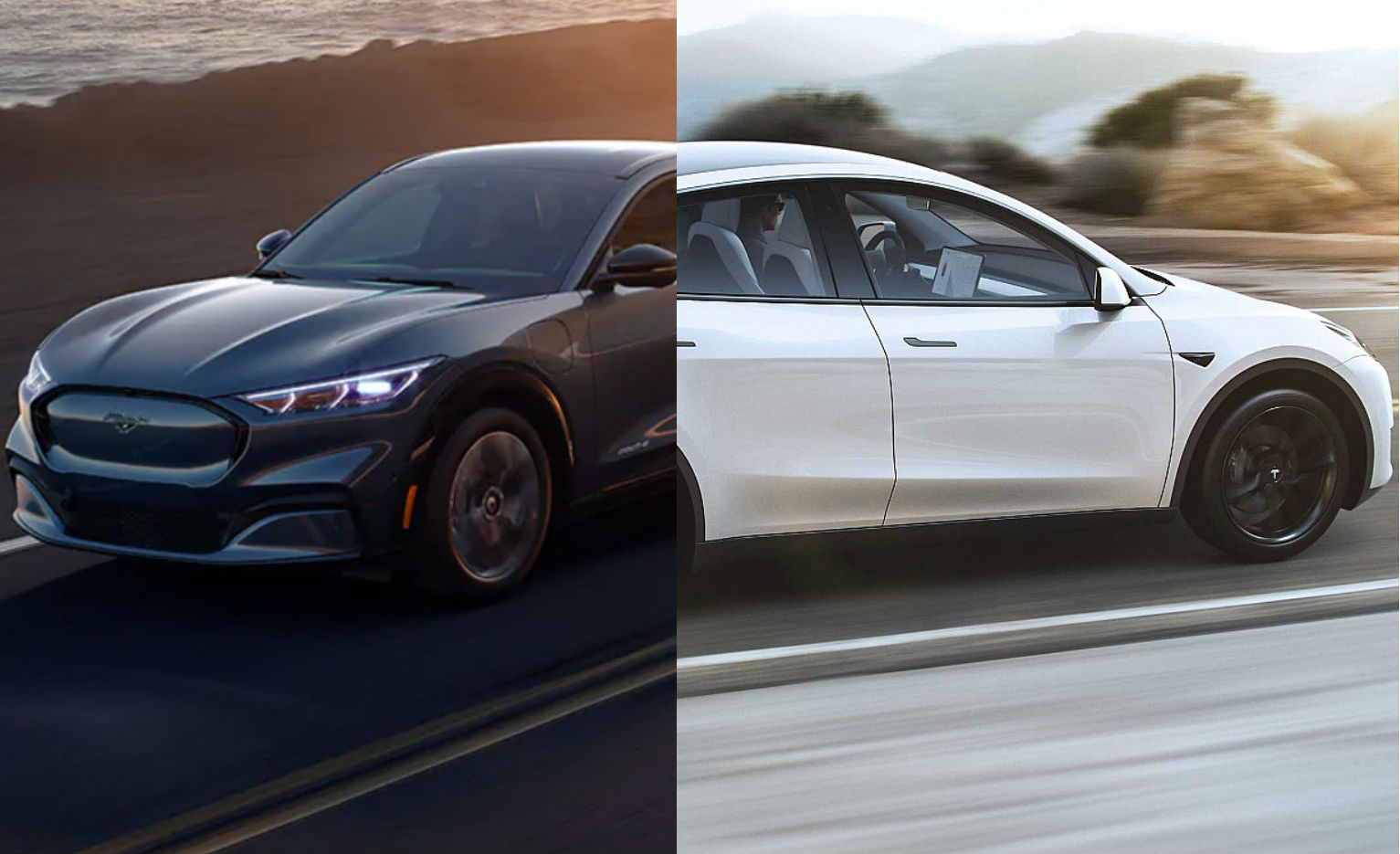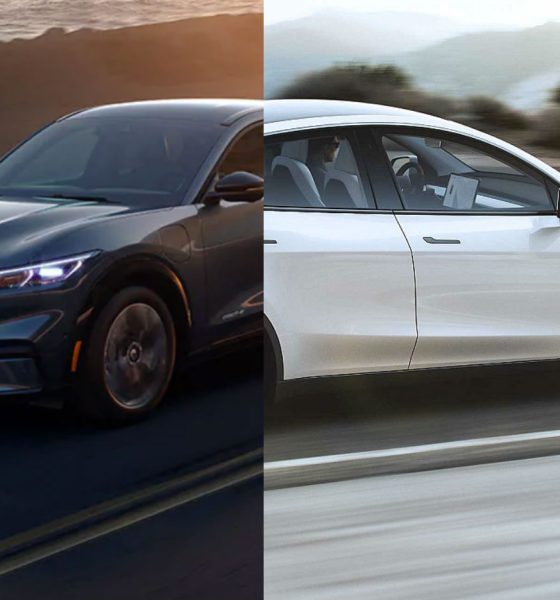

News
No more “Tesla Killers:” It’s becoming increasingly difficult to distinguish the “EV market” from the mainstream auto segment
Those who have followed the Tesla story for years would remember a time when practically every single concept car and production EV was dubbed as a “Tesla Killer.” The idea then was that while Tesla held the lead in electric cars due to its first-mover advantage, the company’s share in the EV segment would shrink once other companies like the Detroit Big Three decided to step into the electric car market.
Yet with Tesla completing over 930,000 vehicle deliveries in a year rife with chip shortages and supply chain issues, it is becoming more and more difficult to justify the idea of several companies competing in a limited “EV market.” Considering the ongoing rise in electric vehicle sales worldwide and the general decline in sales of vehicles equipped with the internal combustion engine, it is starting to become evident that today, there is no longer an “EV market.” Today, there is just a “car market,” and EVs are winning.
One does not even have to look at Tesla’s 87% growth in 2021 vehicle sales to prove this point. A look at how veteran automakers Ford and General Motors fared in 2021 would show how a notable degree of focus and seriousness in electric vehicles may positively or negatively affect an automaker’s numbers in the current auto environment. Both Ford and GM were hit, just like Tesla, with the supply chain crisis, but one could argue that General Motors ended up with the shorter end of the stick.
In Q4 2021, GM’s US sales tanked by 42.9%, Buick fell by 34.8%, Cadillac fell by 47.8%, Chevrolet dropped by 44.7%, and GMC fell by 37.7%. For the entire year, GM’s overall sales dropped by 12.9%. This ultimately allowed Japanese carmaker Toyota to overtake the Detroit veteran for the first time in nearly a century. It should be noted that GM’s electric vehicle push was practically nonexistent in Q4 2021, with the company selling all but 25 Chevy Bolts and one GMC Hummer EV before the end of the year.
Ford did not have an easy 2021 either. The company sold 1.9 million vehicles in 2021, down 6.8% from 2020. Yet despite this, there were notable points of strength in Ford’s results. The most evident of these could be found in the sales of the Mustang Mach-E, the company’s premium all-electric crossover that, at times, has been favorably compared to the Tesla Model Y, one of the market’s best-selling EVs today. Mach-E sales totaled 27,140 vehicles in 2021, making it the second best-selling electric SUV in the US. Interest in the F-150 Lightning also remained strong over the year, to the point where the company had to double its production goals twice to meet the vehicle’s existing demand.
Perhaps it was just chance, or simply bad luck on GM’s part, but one could notice that between the two Detroit veterans, Ford seems to be far more willing to walk the walk with the EV transition in 2021. General Motors might have announced various lofty targets, and US President Joe Biden might have dubbed GM CEO Mary Barra as the person who electrified the auto sector, but numbers don’t lie. In 2022, GM lost in the EV race by a wide margin, and its sales seem to have taken a hit by extension.
The coming year would be one for the record books. Various electric cars from both veterans and newcomers are expected to be released. Tesla has the Cybertruck and the Semi coming, and rumors are high that work on the company’s $25,000 electric car is underway. Rivian has the R1S ramp to look forward to, and Lucid has its work cut out with the ramp of the Air sedan. Ford has the F-150 Lightning coming this year, and GM has recently just announced the Silverado EV. Volkswagen is also expanding its ID lineup, with the highly anticipated Buzz, the successor to the iconic Microbus, launching this year.
Needless to say, 2022, and likely the years following it, would be one that’s characterized by the rise of electric cars. With veteran carmakers now playing catch up to companies like Tesla, the next years would likely see EVs take a more prominent section of the auto sector’s pie. With several countries and regions across the world poised to ban the internal combustion engine within the coming years, buying all-electric cars is starting to become common sense for the mainstream buyer. And that, ultimately, suggests that the “EV segment” has now transitioned into simply the “auto market.”
Don’t hesitate to contact us with news tips. Just send a message to tips@teslarati.com to give us a heads up.

News
Elon Musk’s Grokipedia surges to 5.6M articles, almost 79% of English Wikipedia
The explosive growth marks a major milestone for the AI-powered online encyclopedia, which was launched by Elon Musk’s xAI just months ago.

Elon Musk’s Grokipedia has grown to an impressive 5,615,201 articles as of today, closing in on 79% of the English Wikipedia’s current total of 7,119,376 articles.
The explosive growth marks a major milestone for the AI-powered online encyclopedia, which was launched by Elon Musk’s xAI just months ago. Needless to say, it would only be a matter of time before Grokipedia exceeds English Wikipedia in sheer volume.
Grokipedia’s rapid growth
xAI’s vision for Grokipedia emphasizes neutrality, while Grok’s reasoning capabilities allow for fast drafting and fact-checking. When Elon Musk announced the initiative in late September 2025, he noted that Grokipedia would be an improvement to Wikipedia because it would be designed to avoid bias.
At the time, Musk noted that Grokipedia “is a necessary step towards the xAI goal of understanding the Universe.”
Grokipedia was launched in late October, and while xAI was careful to list it only as Version 0.1 at the time, the online encyclopedia immediately earned praise. Wikipedia co-founder Larry Sanger highlighted the project’s innovative approach, noting how it leverages AI to fill knowledge gaps and enable rapid updates. Netizens also observed how Grokipedia tends to present articles in a more objective manner compared to Wikipedia, which is edited by humans.
Elon Musk’s ambitious plans
With 5,615,201 total articles, Grokipedia has now grown to almost 79% of English Wikipedia’s article base. This is incredibly quick, though Grokipedia remains text-only for now. xAI, for its part, has now updated the online encyclopedia’s iteration to v0.2.
Elon Musk has shared bold ideas for Grokipedia, including sending a record of the entire knowledge base to space as part of xAI’s mission to preserve and expand human understanding. At some point, Musk stated that Grokipedia will be renamed to Encyclopedia Galactica, and it will be sent to the cosmos.
“When Grokipedia is good enough (long way to go), we will change the name to Encyclopedia Galactica. It will be an open source distillation of all knowledge, including audio, images and video. Join xAI to help build the sci-fi version of the Library of Alexandria!” Musk wrote, adding in a later post that “Copies will be etched in stone and sent to the Moon, Mars and beyond. This time, it will not be lost.”
News
Tesla Model 3 becomes Netherlands’ best-selling used EV in 2025
More than one in ten second-hand electric cars sold in the country last year was a Tesla Model 3.

The Tesla Model 3 became the most popular used electric car in the Netherlands in 2025, cementing its dominance well beyond the country’s new-car market.
After years at the top of Dutch EV sales charts, the Model 3 now leads the country’s second-hand EV market by a wide margin, as record used-car purchases pushed electric vehicles further into the mainstream.
Model 3 takes a commanding lead
The Netherlands recorded more than 2.1 million used car sales last year, the highest level on record. Of those, roughly 4.8%, or about 102,000 vehicles, were electric. Within that growing segment, the Tesla Model 3 stood far ahead of its competitors.
In 2025 alone, 11,338 used Model 3s changed hands, giving the car an 11.1% share of the country’s entire used EV market. That means more than one in ten second-hand electric cars sold in the country last year was a Tesla Model 3, Auto Week Netherlands reported. The scale of its lead is striking: the gap between the Model 3 and the second-place finisher, the Volkswagen ID3, is more than 6,700 vehicles.
Rivals trail as residual values shape rankings
The Volkswagen ID.3 ranked a distant second, with 4,595 used units sold and a 4.5% market share. Close behind was the Audi e-tron, which placed third with 4,236 registrations. As noted by Auto Week Netherlands, relatively low residual values likely boosted the e-tron’s appeal in the used market, despite its higher original price.
Other strong performers included the Kia Niro, the Tesla Model Y, and the Hyundai Kona, highlighting continued demand for compact and midsize electric vehicles with proven range and reliability. No other model, however, came close to matching the Model 3’s scale or market presence.
News
Tesla Model Y Standard Long Range RWD launches in Europe
The update was announced by Tesla Europe & Middle East in a post on its official social media account on X.

Tesla has expanded the Model Y lineup in Europe with the introduction of the Standard Long Range RWD variant, which offers an impressive 657 km of WLTP range.
The update was announced by Tesla Europe & Middle East in a post on its official social media account on X.
Model Y Standard Long Range RWD Details
Tesla Europe & Middle East highlighted some of the Model Y Standard Long Range RWD’s most notable specs, from its 657 km of WLTP range to its 2,118 liters of cargo volume. More importantly, Tesla also noted that the newly released variant only consumes 12.7 kWh per 100 km, making it the most efficient Model Y to date.
The Model Y Standard provides a lower entry point for consumers who wish to enter the Tesla ecosystem at the lowest possible price. While the Model 3 Standard is still more affordable, some consumers might prefer the Model Y Standard due to its larger size and crossover form factor. The fact that the Model Y Standard is equipped with Tesla’s AI4 computer also makes it ready for FSD’s eventual rollout to the region.
Top Gear’s Model Y Standard review
Top Gear‘s recent review of the Tesla Model Y Standard highlighted some of the vehicle’s most notable features, such as its impressive real-world range, stellar infotainment system, and spacious interior. As per the publication, the Model Y Standard still retains a lot of what makes Tesla’s vehicles well-rounded, even if it’s been equipped with a simplified interior.
Top Gear compared the Model Y Standard to its rivals in the same segment. “The introduction of the Standard trim brings the Model Y in line with the entry price of most of its closest competition. In fact, it’s actually cheaper than a Peugeot e-3008 and costs £5k less than an entry-level Audi Q4 e-tron. It also makes the Ford Mustang Mach-E look a little short with its higher entry price and worse range,” the publication wrote.








